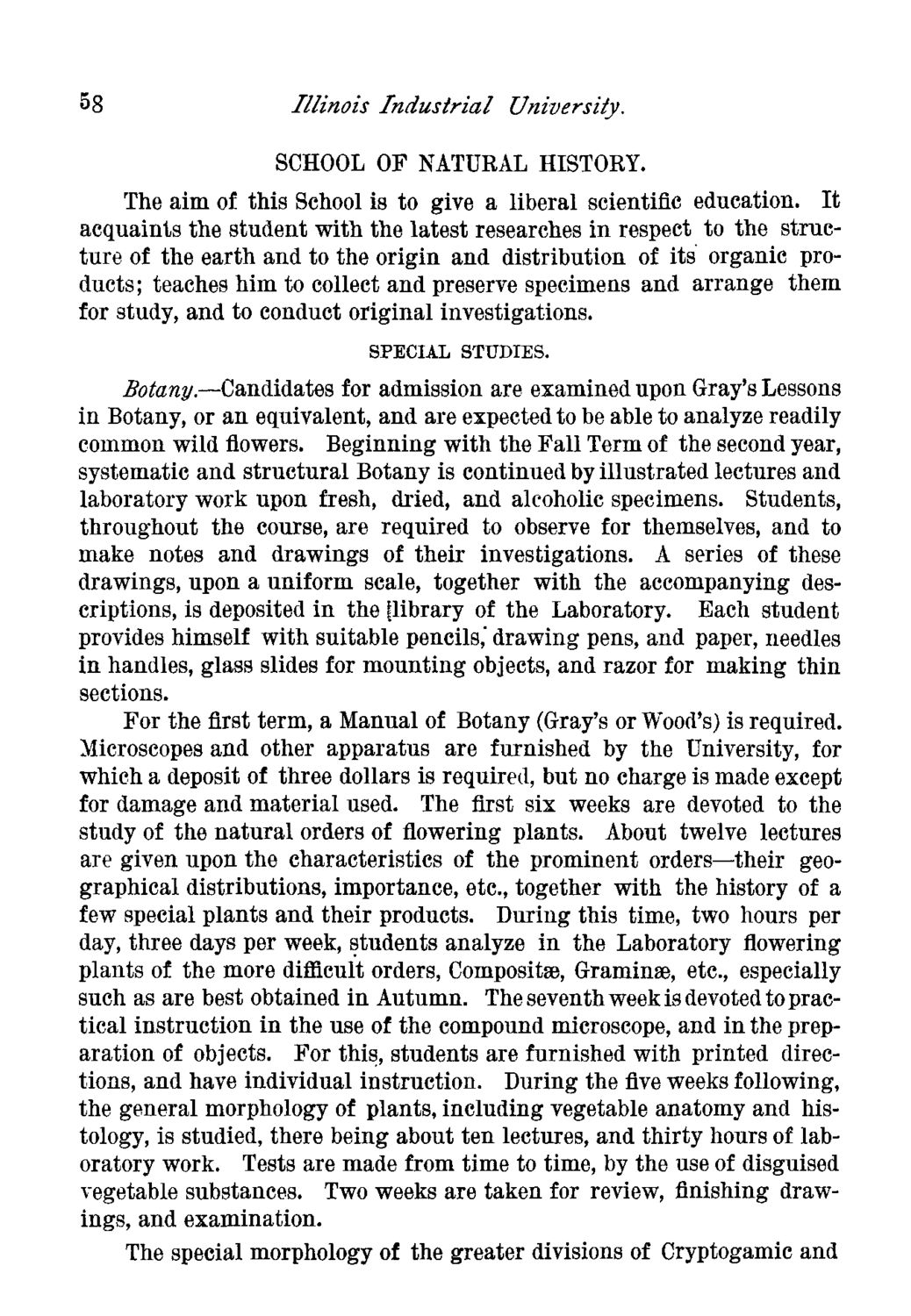| |
| |
Caption: Course Catalog - 1881-1882
This is a reduced-resolution page image for fast online browsing.

EXTRACTED TEXT FROM PAGE:
58 Illinois Industrial University. SCHOOL OF NATURAL HISTORY. The aim of this School is to give a liberal scientific education. It acquaints the student with the latest researches in respect to the structure of the earth and to the origin and distribution of its organic products; teaches him to collect and preserve specimens and arrange them for study, and to conduct original investigations. SPECIAL STUDIES. Botany.—Candidates for admission are examined upon Gray's Lessons in Botany, or an equivalent, and are expected to be able to analyze readily common wild flowers. Beginning with the Fall Term of the second year, systematic and structural Botany is continued by illustrated lectures and laboratory work upon fresh, dried, and alcoholic specimens. Students, throughout the course, are required to observe for themselves, and to make notes and drawings of their investigations. A series of these drawings, upon a uniform scale, together with the accompanying descriptions, is deposited in the [library of the Laboratory. Bach student provides himself with suitable pencils,' drawing pens, and paper, needles in handles, glass slides for mounting objects, and razor for making thin sections. For the first term, a Manual of Botany (Gray's or Wood's) is required. Microscopes and other apparatus are furnished by the University, for which a deposit of three dollars is required, but no charge is made except for damage and material used. The first six weeks are devoted to the study of the natural orders of flowering plants. About twelve lectures are given upon the characteristics of the prominent orders—their geographical distributions, importance, etc., together with the history of a few special plants and their products. During this time, two hours per day, three days per week, students analyze in the Laboratory flowering plants of the more difficult orders, Composite, Graminse, etc., especially such as are best obtained in Autumn. The seventh week is devoted to practical instruction in the use of the compound microscope, and in the preparation of objects. For this, students are furnished with printed directions, and have individual instruction. During the five weeks following, the general morphology of plants, including vegetable anatomy and histology, is studied, there being about ten lectures, and thirty hours of laboratory work. Tests are made from time to time, by the use of disguised vegetable substances. Two weeks are taken for review, finishing drawings, and examination. The special morphology of the greater divisions of Cryptogamie and
| |